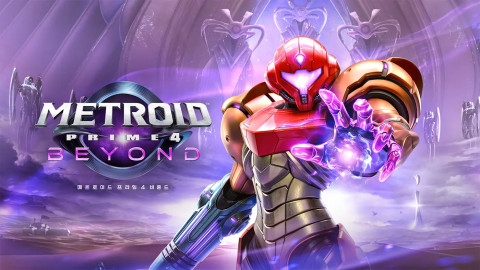
Spoilers for IT to follow!
Stephen King’s gargantuan novel IT, a decades-spanning tale of an evil, child-murdering extraterrestrial being, was originally turned into a two-part miniseries in 1990, starring Tim Curry in the enthralling role of Pennywise the dancing clown. While the mini-series has its moments, particularly in the first half, it suffers from a lack of identity, jumping between campy horror and character drama without ever connecting the two. Early trailers for this year’s big-screen adaptation painted the film as “terrifying,” with Bill Skarsgård’s take on Pennywise ditching the humor for full-fledged villainy, but this wasn’t what made the film so successful. Though it packs in plenty of spooky moments, the movie’s primary purpose is to entertain, and this is never exploited to catch viewers with a cheap pop-out scare. To see examples of horror used as one piece of a larger puzzle, we can certainly look at other Stephen King adaptations, but this technique has been much more successful in video games.
A perfect mix
Resident Evil, the godfather of the horror genre, is fondly remembered now for its terrifying enemies and brilliant, creepy environments. That’s certainly still the case, with the series most recent installment, Resident Evil 7, causing me to jump in my seat at times. But Resident Evil never uses its scares as the ultimate goal.
They’re sprinkled throughout to keep you on your toes and to make the puzzles, exploration, and even light humorous moments seem a little more tense. Leaning too far away from horror has led to some less successful games like Resident Evil 5 and Operation Raccoon City, but when Resident Evil finds that happy medium, everything shines brighter. The scary sections make the action feel more rewarding. The humor and quiet moments offer a nice foil for the barrage of deadly monsters attempting to kill our heroes, and we’re still consistently entertained by scares rather than dreading them.

Director Andy Muschietti seemed to realize the importance of this balance in IT, structuring the first half of the film that allowed the audience to “reset” before being pummeled with creepy imagery again. Rather than show each member of the “Losers Club” being visited by Pennywise right away, these scenes are spread out and separated by moments focused on character development. Before Beverly sees a horrifying vision of blood in her bathroom, we learn of her struggle with bullying at school and an abusive father. Ben already lives in fear each day, with the evil Henry Bowers constantly on the verge of murdering him. Leader Bill struggles with a stutter and a broken home after the death of his only brother, Georgie.
The tables have turned
These scenes are important not just because they break up the horror and make Pennywise’s limited screentime even more impactful, but because they provide each member of the Losers Club with the ammunition they need to ultimately defeat him. To Beverly, the clown might seem more immediately scary, but her father was a much more direct threat to her well-being. Bowers had already caused physical harm to Ben, carving his initials into his stomach. Eddie’s own mother protected him to the point of smothering, preventing him from enjoying the little good the town of Derry had to offer. The clown knows their worst fears, but once the children have confronted them and proved they’re stronger, Pennywise is powerless against them – beating him to a pulp with a baseball bat is just a bonus.
This sense of power over a terrifying creature is crucial to the success of IT, but it’s even more important in video games, where prolonged failure will result in the player being unable to see the story to completion. The trend of “you’re screwed” horror games such as Slender and Amnesia has, thankfully, died down – the short experiences were extremely popular on services like YouTube and Twitch, where viewers could see their favorite personalities screaming in frustration as they repeatedly died, but much of that magic is lost when you’re the one being forced to replay the same sections over and over again. Even Alien: Isolation – hailed by horror fans as a return to form for the franchise – is guilty of this, giving players almost no chance of escaping the Xenomorph after being spotted. It isn’t until more than halfway through the game, when protagonist Amanda Ripley finds a flamethrower, that she actually has a deterrent for the alien, and the scares finally entertain.
The unpredictable

There is one element of IT that smartly deviates from the greatest horror games, however: unpredictability. Pennywise is merely one form that the eponymous “IT” can take, and as such, he can appear in just about any place at any time. The audience is constantly on its toes, waiting to see him lurking in the background or jumping out of a dark corner. Occasionally, he simply waves at the Losers, reminding them of his presence without actually needing to attack.
In films, this technique is what helps build up suspense and make the terrifying moments even scarier. In games, however, it simply doesn’t work. Without clear-cut rules for players and enemies to follow, accomplishing a goal offers little reward, but rather a sense of relief that the experience is over. The alien in Alien: Isolation often rubber-bands to Ripley’s position, not following a pattern for players to manipulate. Compare this to the Baker family in Resident Evil 7, who can be avoided with careful planning and smart use of items, and it’s clear why the latter game is more successful. Failure isn’t arbitrary, but rather the direct result of poor decisions by the player. “Get good,” and you’ll be able to succeed against even the most terrifying creatures.
IT’s lessons aren’t completely universal, and there are some whose only goal when experiencing horror will be to soil their pants, but for everyone else, it serves as a perfect example of how to treat the genre. We can only hope that Muschietti can recreate the magic in the second part, but game designers should take notice immediately: It’s better for horror to be fun than merely terrifying.

Disclaimer : The following article was written freely based on the author's opinion, and it may not necessarily represent Inven Global's editorial stance.
Sort by:
Comments :0






